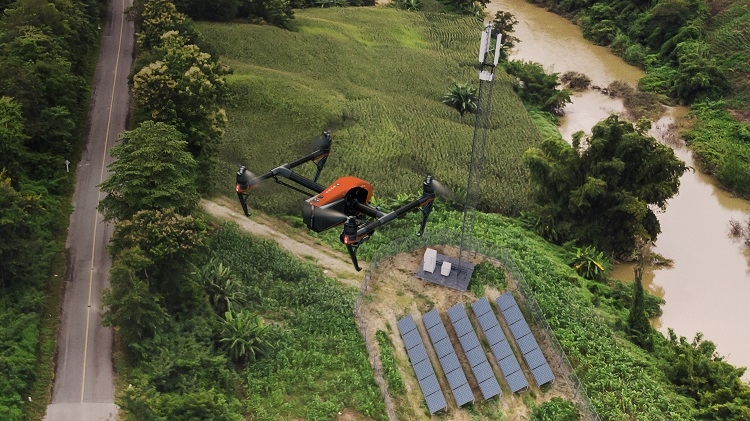The global tech trends of the future
 |
| By Denis Brunetti, president of Ericsson Vietnam, Myanmar, Cambodia, and Laos |
More than ever before, communication technologies are providing innovative solutions to help address social, environmental, and economic challenges by enhancing efficiency and enabling both intensified network usage and more well-informed decisions.
The communications industry supports other industries by enabling them to deliver services, while mobile networks globally and in Vietnam are proving yet again that they can deliver the performance and reliability to support society in this hour of need.
Every year our global chief technology officer Erik Ekudden releases a report on the technology trends that he sees shaping the communications industry. In this year’s report, the trends reflect on the ongoing evolution of the network platform in terms of the key needs that are driving its evolution and the emerging capabilities that will meet both those and other needs.
Digital infrastructure offers endless possibilities to individuals, enterprises, and governments across the globe with its unique ability to bridge vast distances and enable powerful new solutions to a wide range of social, environmental, and economic challenges. Healthcare, education, finance, commerce, governance, and agriculture are just a few of the sectors that stand to benefit from the massive efficiency gains that digital infrastructure can provide.
Designed to carry vital messages, commands, reasoning, insights, intelligence, and all the sensory information needed to support the continuous evolution of industry and society, the network platform is designed to be the spinal cord of digital infrastructure. The major advantage of the network platform is that it will be accessible anywhere, with guaranteed performance, and will be inherently reliable, fulfilling all requirements for secure communication.
The first three of the seven trends this year are the key drivers of network platform evolution. All three highlight the growing need to bridge the gap between physical and digital realities. Most notably, this involves delivering sensory experiences over networks and utilising digital representations to make the physical world fully programmable.
A collaborative and automated physical world
As physical and digital realities become increasingly interconnected, advanced cyber-physical systems have emerged. The systems consist of humans, physical objects (machines and other things), processes, networking and computation, and the interactions between them all.
Their primary purpose is to provide individuals, organisations and enterprises with full transparency to monitor and control assets and places, thereby generating massive efficiency benefits. One early example of this is the way that cyber-physical systems can help planners optimise energy and materials usage.
 |
| Man in robot factory using AR_Brandmanual powerpoint |
Connected, intelligent machines
Machines will become increasingly intelligent and autonomous as their cognitive abilities continue to expand. Their understanding of the world around them will continue to grow in tandem with their ability to interact with other machines as part of a cognitive system of systems.
The internet of senses
The ability to deliver multisensory experiences over future networks will make it easier than ever before to transfer skills over the internet. It will ultimately lead to the emergence of the internet of senses, which combines visual, audio, 3D touch, and other technologies to allow human beings to have remote sensory experiences.
The internet of senses will enable seamless interaction with remote objects and machines, making it possible to fully realise use cases such as remote health checks, remote operation of machinery, holographic communication, and virtual reality holidays.
Eventually, brain-computer interfaces will enable communication at the speed of thought where, instead of speaking to machines, humans will merely think in order to direct them.
 |
| Video surveillance by drone rural 2 |
A fully-connected future
The remaining trends are increasingly advanced technologies in four areas – non-limiting connectivity, pervasive network compute fabric, trustworthy infrastructure, and cognitive networks. Breakthroughs in these four areas will be essential to fully enable the top three trends and continuously expand the capabilities of digital infrastructure through the network platform in the years and decades ahead.
Future technologies will enable a fully digitalised, automated, and programmable world of connected humans, machines, things, and places.
Traffic in future networks will be generated not only by human communication but also by connected and intelligent machines embedded with AI. As time goes on, the percentage of traffic generated by humans will drop as that of traffic generated by machines – including autonomous vehicles, drones, and surveillance systems – rises.
Items that make up the Internet of Things require even more sophisticated communication than humans do. For example, they must be able to interact dynamically with the network. Sensor data will be used to support the development of pervasive cyber-physical systems consisting of physical objects connected to collaborative digital twins. Future capabilities will also include support for the transfer of modalities like sense of smell.
It is clear the most important future network trends to watch are those that relate most closely to the growth and expansion of intelligent digital infrastructure on the network platform.
What the stars mean:
★ Poor ★ ★ Promising ★★★ Good ★★★★ Very good ★★★★★ Exceptional
Themes: Digital Transformation
Related Contents
Latest News
More News
- The next leap in Cloud AI (December 11, 2025 | 18:19)
- Outlook in M&A solid for Singapore (December 08, 2025 | 10:31)
- Vietnamese firms are resetting their strategy for global markets (December 05, 2025 | 17:04)
- LPBank Securities accelerates AI and data innovation with AWS (December 05, 2025 | 09:00)
- Improving traceability capacity with Zebra Technologies (November 26, 2025 | 10:08)
- Ho Chi Minh City engages 500 CEOs in dialogue on building global megacity (November 25, 2025 | 16:00)
- CEO shares insights on Phu My 3 IP’s journey to green industrial growth (November 17, 2025 | 11:53)
- NS BlueScope CEO highlights decade of sustainable steel efforts (November 15, 2025 | 10:00)
- SCG maintains strong cash flow and drives low-carbon growth in Q3 (November 07, 2025 | 09:53)
- Thai Huong: a visionary business leader bridging Vietnam and Russia (November 05, 2025 | 17:00)

 Tag:
Tag:






















 Mobile Version
Mobile Version